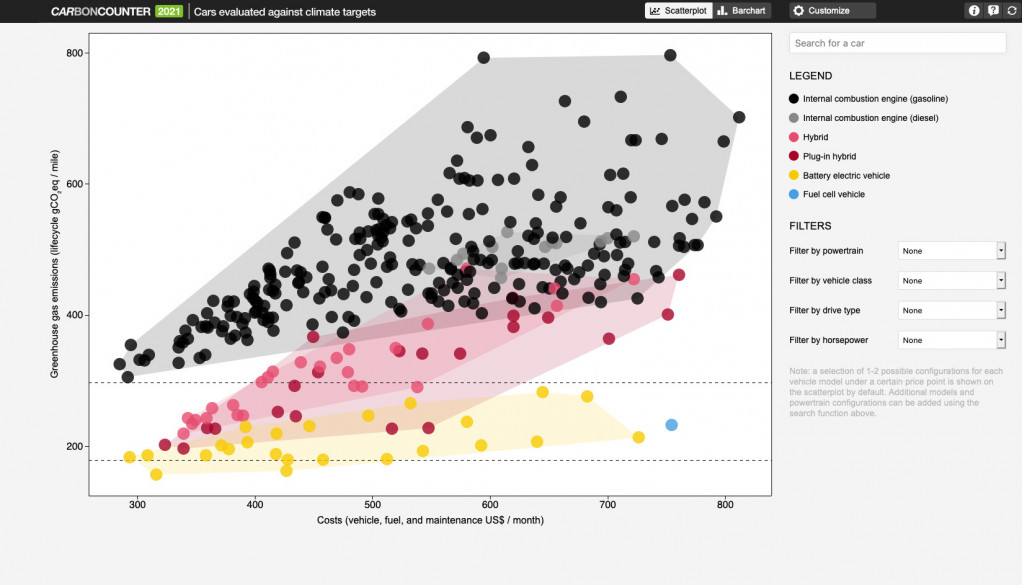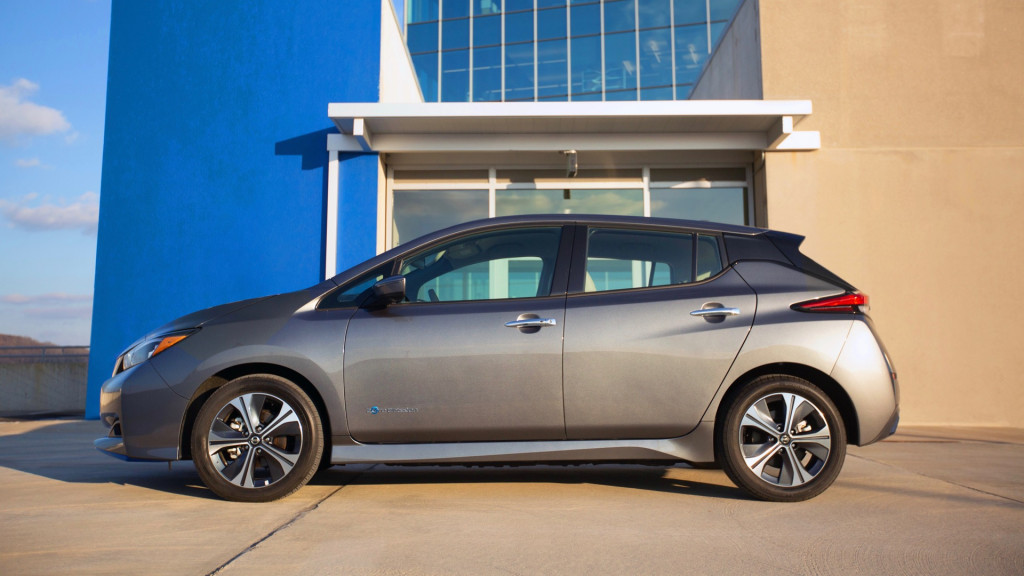Given typical driving patterns, there isn’t a single gasoline-fueled vehicle you can buy today that, on a national basis, promises to be as clean over its lifetime as a fully electric one.
That’s confirmed by “well-to-wheels” data from the Union of Concerned Scientists, in what continues to be the most complete assessment of the carbon impact of what you drive in the U.S. It's true globally, as well, according to a Cambridge study last year that projected EVs are cleaner in about 95% of the world.
But in the U.S. and about everywhere except Norway and the other few places where incentives really tip the scales, there’s a market hurdle that EV shoppers need to overcome: the high sticker price. Many of the electric vehicles with the biggest greenhouse-gas emissions advantage are much more expensive than the typical gasoline model.
For those who can afford the higher up-front costs but still stall about the jump to electric, visualizing how the cost advantages pencil out over the years can make all the difference—and that’s what the Carboncounter.com project, from the MIT Trancik Lab helps show for almost every production model.

Carboncounter.com project - 2021 update
The research group's site, which Green Car Reports covered years ago, maps out lifetime costs (initial cost, fuel, and maintenance) and greenhouse gas emissions on a scatter plot or bar chart. As noted by the New York Times it was updated earlier this month to include 333 vehicles by default in the scatterplot—updated for the 2021 model year—with about 1,000 models accessible via the search function.
Visitors can adjust much about the dynamic tool to see how things like their cost of electricity or a higher fuel price might affect things, or variables like a steeper depreciation or a shorter ownership. With the new version, they can adjust the default emissions intensity for electric production—yes, the grid has become greener—and the production emissions for vehicle fuel. Users have the option to see the effect of varied levels of emissions due to battery production, and to set the total vehicle lifetime and duration of ownership. They can also adjust the “utility factor” that reflects the proportion of miles that are traveled all-electric, and add refunds for specific states.

2021 Nissan Leaf
Key takeaways enforced with just a quick glance at the chart show that there’s zero overlap between electric cars and gasoline ones in typical usage conditions, while hybrids sandwich in between the two groups in carbon impact. And it's not surprising that EVs that are both efficient and affordable—the Tesla Model 3 Standard Range Plus, the Mini Cooper SE, the Nissan Leaf, and the Hyundai Ioniq Electric—are near the sweet-spot vertices.
Although the data won’t provide anything new to longtime readers, it could serve as an eye-opener to those new to electric vehicles and something to bookmark the next time you’re in a discussion about EVs. Add the idea that electric vehicles keep getting cleaner with the grid, and you have a great conversation-starter—as soon as we can get back to those sorts of things, that is.
You can find a video produced with the last major revision below.













